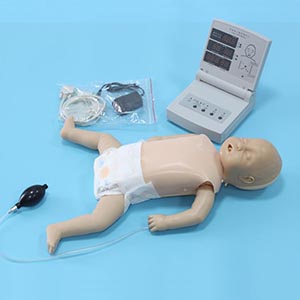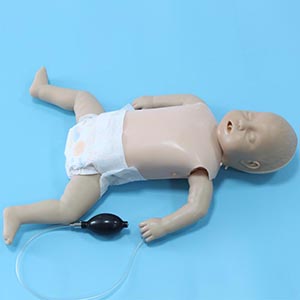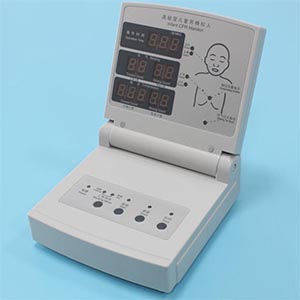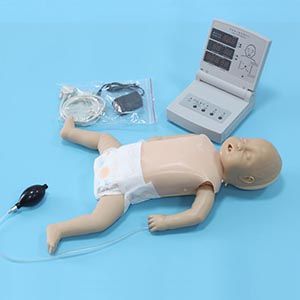In neonatal emergency care, precision and rapid response often make the difference between life and death. However, in the face of immature life, medical personnel, especially beginners, may make mistakes in first aid due to lack of practical experience. In recent years, as a high-tech teaching tool, the infant integrated first aid training simulator provides a new solution for newborn first aid education. So, is this device really effective in reducing errors in first aid? This paper will discuss this problem from the perspective of medical technology and industry experts, combined with data and practical cases.
Return to reality: The core value of simulation training

Integrated Infant First Aid simulator
Traditional first aid training mainly relies on classroom explanation and model demonstration, but this method can not fully simulate the real clinical scene. With its highly simulated shape and intelligent function, the infant integrated first aid simulator can realistically present various first aid scenarios including respiratory failure, cardiac arrest, airway obstruction and so on. Through the real-time physiological feedback system, students can feel subtle changes in vital signs, such as heart rate, breathing rate, blood oxygen saturation, etc., and learn to quickly judge and deal with problems in a dynamic environment.
According to one study, simulation-based training students made 43% fewer errors in first aid procedures than traditional teaching methods, especially in chest compressions, artificial respiration and tracheal intubation. This data is sufficient to prove that simulation training can reduce mistakes caused by tension and lack of skills to a certain extent.
Enhancing team collaboration: Support for interdisciplinary first aid exercises
Neonatal emergency care often requires teams from multiple disciplines to work together, including pediatricians, anesthesiologists, and nurses. Infant integrated first aid simulators support team cooperation drills, and help students master efficient communication and cooperation skills in the simulation through multi-role division of labor and cooperation.
A large teaching hospital carried out team training after introducing the infant first aid simulation system, and the results showed that the communication efficiency of team members in dealing with emergency situations was increased by 35%, the rescue time was shortened by 20%, and the newborn survival rate was significantly improved in the simulation test. Experts believe that analog devices provide important support for collaboration in complex medical processes.
Personalized feedback and student growth

The infant integrated first aid simulator is equipped with data recording and real-time feedback functions, and a detailed evaluation report will be generated after each drill, including the accuracy of the student's operation, response speed, and the completion rate of key steps. This personalized feedback can not only help students find their own shortcomings, but also provide data support for educational institutions to optimize teaching programs.
An industry study in 2023 showed that students who underwent simulation training had 25% higher passing rates ** than those who did not use simulation equipment, and student satisfaction was generally higher. The data proves that the device has become an integral part of first aid education.
Cost and promotion: Challenges and opportunities coexist
Despite the significant advantages of the infant integrated first aid simulator, the high cost is still the main obstacle to its popularization. Industry data show that the average price of a high-end analog human device is between 100,000 and 300,000 yuan, which is a large burden for some small and medium-sized medical institutions or educational institutions. However, with the advancement of technology and the expansion of market size, the cost of equipment is expected to gradually reduce.
At the same time, experts called on the government and industry associations to increase funding and promote the popularization of high-tech first-aid equipment. As one pediatric emergency specialist put it: "Reducing errors in neonatal emergency care requires not only technical support, but also policy and resource tilt."
Conclusion: The future potential of simulated human training

To sum up, the infant integrated first aid simulator can indeed reduce errors in neonatal first aid in several aspects. It has injected new vitality into first aid education through the restoration of real scenes, the improvement of team cooperation ability, and the support of personalized feedback. However, the challenges of cost and resource allocation still need to be overcome in order to achieve full promotion.
Looking forward to the future, with the further development of medical technology and the strengthening of policy support, the infant integrated first aid simulator is expected to become the standard configuration in the field of first aid education, so as to help more students meet the clinical challenges of neonatal first aid, and strive for more hope for every life.

